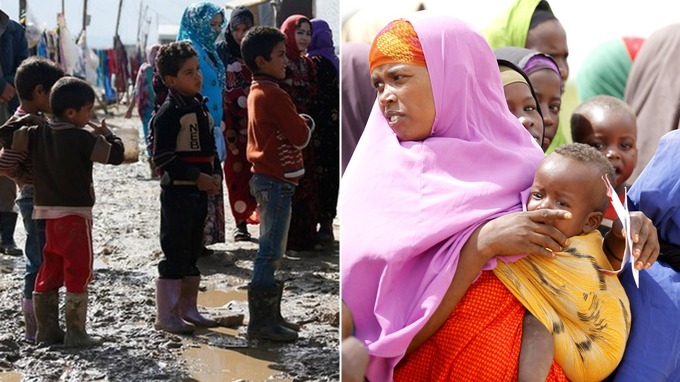Every refugee crisis is different but lessons from Syria and Somalia can be shared

By Conor Phillips
Conor Phillips, Country Director for the International Rescue Committee in Kenya, writes about the situation faced by refugees at the Dadaab camp, parallels that can be drawn with Syrian refugees and lessons that can learnt from both crises.
While the refugee debate in Europe mounts, the vast outflow of people from countries affected by conflict and disaster continues. In the last five years an estimated 7.5m have fled their home countries.
During this time, Syria has been the biggest refugee producing country and Somalia the second. In both countries the interrelated factors of conflict and drought made survival at home impossible for many. Every crisis is different but there are many useful lessons that can be shared between the two, both of which will unfortunately be ongoing for years to come.
Earlier this month, ITV journalist Martin Geissler visited Dadaab refugee camp in Kenya to follow up on his 2011 story of a family that fled famine and conflict in Somalia. Martin’s story focused on Minhaj, the youngest child in the family, who had just arrived at a camp hospital run by the International Rescue Committee (IRC). Minhaj was literally starving to death. Dr. Kiogora, IRC’s head of medical services in the camp, said that had the child not been brought in that morning he likely would have died before the end of the day.
230,000
Somalis approximately made the trip to Dadaab camp between mid-2010 and early-2013.
Aid agencies were severely overstretched trying to deal with both the sheer numbers arriving and the terrible health condition of people entering the camp after days walking through the desert. Hundreds died on the journey and hundreds more families arrived with children as malnourished as Minhaj. He is now a healthy and happy five-year-old.
Kenya and other countries in the region must be applauded for continuing to receive huge refugee populations from Somalia and South Sudan, despite mounting internal pressure to close the camps. Without the political will to keep the camps open, Minhaj and many thousands of others like him would not survive. Countries neighbouring refugee source areas are almost always the primary destination for refugees. This is a key reason four-fifths of refugees are hosted in developing countries.
Another key reason is that developed countries prefer for refugees to stay in the regions they come from. Most do in fact stay close to home, however, the crisis in Syria has unfolded on such an overwhelming scale that neighbouring countries can no longer adequately accommodate them.
Less than 7% of Syrian refugees have sought asylum in Europe but, as is becoming increasingly apparent, this percentage is about to quickly rise. And while the right to seek asylum is enshrined in international law, the rapid instalment of razor-wire fences at Europe’s borders highlights how difficult it can be for refugees to exercise this right in practice.
The best-case scenario for most refugees is that their country of origin stabilizes to a level where they can safely return. This is why a political solution for Syria, although unlikely in the short-term, is the best long-term way to address the largest humanitarian crisis since WW2. Until then, the massive scale of this current crisis means that developed countries will need to greatly increase their refugee intake.
With the exception of Germany and Sweden, EU proposals to accept refugees have so far been verging on irrelevance. EU members are balking at a proposal to accept 160,000 refugees. To highlight the absurdity of this scale, this is 1/8 of the number of Syrians that Lebanon already hosts and Lebanon’s landmass is 1/423 the size of Europe.
We also need to think further into the future about what happens to these huge refugee populations if in one or two decades Syria does not stabilise, which is a very real possibility.
Here, Somalia unfortunately provides a useful case study. The country has been in turmoil for over 20 years and Dadaab camp has been in existence for the same amount of time.
Camp residents are given the basic necessities of medical care, education, water and food but their options for the future remain are limited. Less than 2% intend to return to Somalia in the next year and less than 1% will ever be resettled in developed countries. The remainder are left in a limbo without the right to work or own land, leaving the option of camp life, which comes with limited freedoms. This is why aid money that also focuses on rebuilding refugee lives – through, for example, programs training Somalis with skills needed to work at home – is also critically important. For Syrian refugees we also need to begin addressing this immediately.
The writer is Country Director for the International Rescue Committee in Kenya. This article first appeared in ITV.